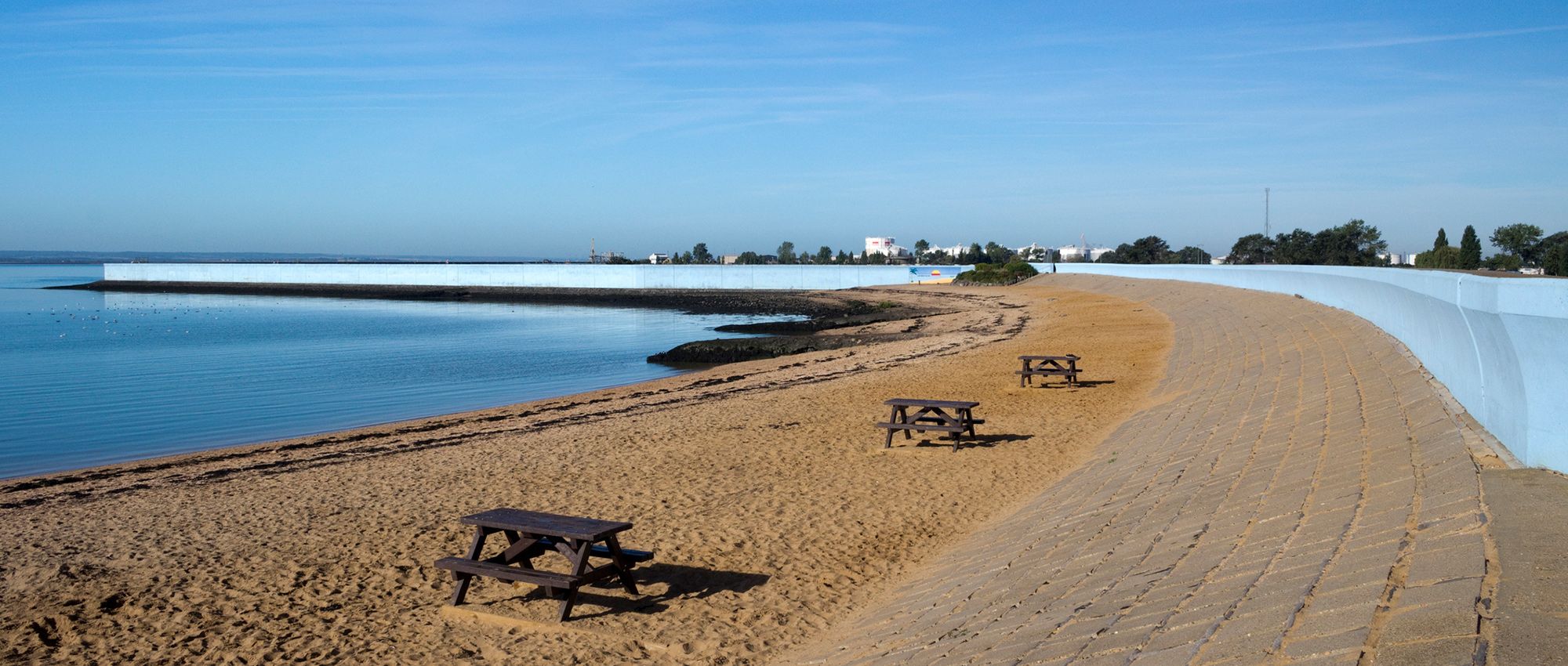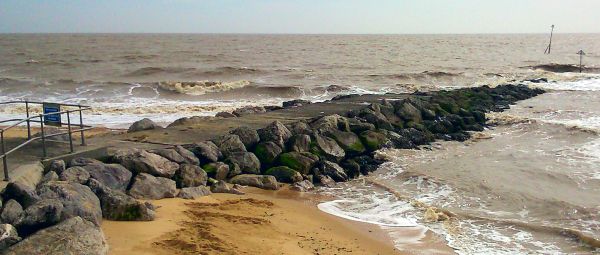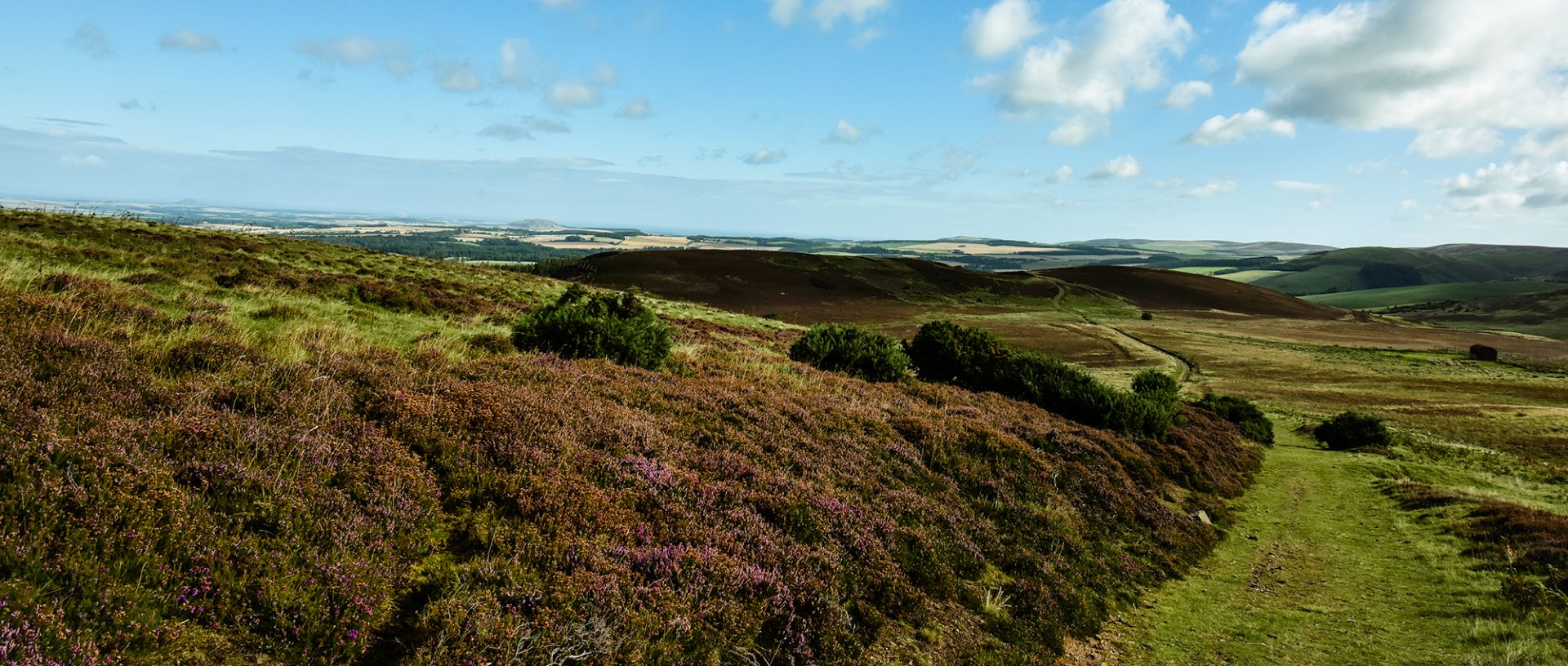The best summer walks in Essex
Summer is a fantastic time to explore this eastern county

The county flower of Essex is the summer-blooming poppy. Which hints that this is an excellent time of year to plan a walk here. The east-coast county is lovely in this season. The fields, forests and riverbanks are lush, wildflowers are in bloom and sunshine shimmers on the coast’s shifting sands and salt marshes. There are some surprises to be found too.
Alresford - Best for: marshes and mills
Constructed in 1831, Thorrington Tide Mill is the only remaining tide mill in Essex. The white-timbered building is currently being restored but is occasionally opened to the public on summer weekends. Even if it’s closed, it’s a fascinating goal for a short summer walk along Alresford Creek.
The village of Alresford has a train station. Starting from here, this loop is around 4 miles. Pick up the creek by walking down Ford Lane, via the ruins of St Peter’s Church. Then veer east along the water, across a brook and over the salt marshes, looking for butterflies and birds as you go. You’ll see the mill, dazzling-white against the oak trees, lazy creek and mudflats. It’s an idyllic spot for a picnic. Head back via the meadows and flooded gravel pits, which are also havens for summer species.

Hatfield Forest - best for… Fantastic flowers
This former medieval hunting forest, now looked after by the National Trust, is delightful for walking year-round. But summer offers a particular bounty of colour. Hatfield’s trees, some of which are over 1,000 years old, are in full, green leaf. Waterlilies are bursting on the lake. And wildflowers are rampant. From late May to June, 300 million buttercups blanket the meadows. These are joined by other species such as fragrant water mint, elegant irises, vibrant red campion and striking-blue speedwell.
See how many you can spot on an easy, dog-friendly 3.5-mile loop walk around the park. It can be muddy, but summer is your best chance of finding firmer trails. Start from Shell House, where there are toilets and a cafe. Then head clockwise, along wide ‘rides’ in the trees and onto Takeley Hill, a wildflower hotspot. The trail returns through woods rich in rare insects and along the lakeshore. If you have any energy left, hire a rowing boat and explore more from water-level.
Canvey Island - best for… Island escaping
There’s a real completist pleasure in making a full circuit of Canvey Island. It’s fairly long, measuring 16 miles in total. But the going is flat, often following the sea wall, and the route is varied, which will distract from the distance.
Start from Benfleet train station, cross the bridge onto the island and head anticlockwise. The first section of the walk crosses nature reserves bursting with life. There are as many species per square metre here as there are in a rainforest. In summer that includes pyramidal orchids, rare bees, trilling skylarks and yellow wagtail.
The second section reveals a more human landscape. You’ll see the eerie remains of a jetty to nowhere and huge ships on the Thames Estuary. You’ll pass the pubs and pleasures of Canvey’s tourist resort. And you’ll find a grassy country park and quiet creeks.
Constable Country - best for… Life imitating art
Born in Dedham Vale in 1776, John Constable is England’s most beloved landscape artist. His most famous painting, the Hay Wain, depicts the River Stour running past Willy Lott’s Cottage on a summer afternoon. It’s a scene that hasn’t changed much since. Plot a 7-mile loop though ‘Constable Country’ on the Suffolk-Essex border, to put yourself in the frame.
From the pretty village of Dedham, walk east along the burbling Stour. The trail leads amid water meadows and gentle hills to Willy Lott’s Cottage and Flatford Mill, once owned by Constable’s father. Eventually, strike away from the river. After crossing the railway, pick up the Essex Way to head back to Dedham, via old St Marys Church. Pretty as a picture.
Dengie National Nature Reserve - best for… Wild walking
This sprawling nature reserve represents the Essex coast at its wildest. It’s a hotspot for overwintering birds. But summer, when the weather along this exposed shore is less fierce, is arguably a more enjoyable time to visit. This is also when the salt marshes are alive with yellow-horned poppies, purple sea lavender, twittering skylarks and wading birds.
An easy-going 6-mile circular route from the village of Bradwell-on-Sea offers a good mix. Walked anticlockwise from Eastlands Farm, it first passes St Peter’s, founded in AD 654 and one of England’s oldest churches. Then it follows the sea wall, around the mud flats, shell banks and tidal pools, with views across the Blackwater Estuary. You might spot foraging oystercatchers and the billowing sails of traditional Thames barges. It also passes the Bradwell Nuclear Power Station and a selection of fine pubs.
Coggeshall & Kelvedon - best for… Charming villages
This leisurely 8.5-mile ramble in the county’s rural middle reveals some delightful countryside and two of Essex’s most attractive villages. It’s a wonderful walk for a summer’s day, when fields are green and the River Blackwater sparkles in the sunshine.
Start at pretty Kelvedon, a former Roman settlement with a train station, pub and lots of independent shops to browse. The trail heads north through Blackwater Vale to handsome Coggeshall, a town crammed with timber-framed houses and listed buildings. Grange Barn, which dates to the 13th century, is one of the oldest monastic barns in Britain. Allow time for exploring here before winding back south, in sight of the meandering river.

Walton-on-the-Naze - best for… Fossils
A warm summer’s day is just right for slow walks around Walton-on-the-Naze. Here you’ll find seaside family fun as well as some of England’s most diverting beaches. The fast-eroding cliffs are full of fossils where it’s not unusual to find petrified wood and sharks’ teeth. Meanwhile, the rockpools are busy with crabs, whelks and other sea creatures.
The 3.7-mile Walton-on-the-Naze Wildlife Trail encircles the whole Naze peninsula. Head beyond the groynes and, if the tide is out, walk along the beach. Search for ancient treasures and watch sand martins nesting in the cliffs. Then stroll along Hamford Water, where you might spot common and grey seals lounging on the mud. The return is via Walton Channel, rich in birds. The Naze Nature Discovery Centre is a great place to pick up more information.
Chipping Ongar - best for… Hedgerows and heritage
Expect a few surprises on a 5.5-mile ramble in this patch of Essex, just east of Epping Forest. Though the M11 rumbles nearby, you’ll find open farmland, wild hop fields, haunted woods, Victorian explorers and the world’s oldest wooden church.
Start from Chipping Ongar, which has pubs a-plenty. You could even arrive here via the steam trains of the Epping Ongar Railway. Seek out the town’s Livingstone Cottages, where David Livingstone started his missionary training, and the remains of the Norman castle. Then head northwest, picking up Crispsy Brook, keeping an eye out for kingfishers and damselflies.
Next, the trail bears along Penson’s Lane, an old Roman road that’s now a vital wildlife corridor. It’s reputedly haunted, though in summer you’re more likely to see orchids than ghosts. The lane leads to ancient Greenstead Wood, where the oaks and hornbeams provide welcome shade. Further on, Greenstead village is where you’ll find a timber-built Saxon church, reputedly dating to AD 645.
Explore more
We’ve got ideas for hundreds of wonderful walking routes across England, Scotland and Wales, long and short, easy and challenging. Search for routes on our website. Or join a guided walk with a local Ramblers group. Find your nearest Ramblers group and choose a walk that suits your pace, fitness and interests.
All images © Getty

7 family-friendly walks in Cannock Chase, Staffordshire
Cannock Chase is the smallest AONB in the country. Small, but perfectly formed. And just the right size for little legs to find big adventures.

7 easy walks in the Lake District for beginners and families
Child-friendly walks with maximum reward for minimal effort exploring the fells, valleys and lakes of the Lake District National Park.

A family guide to walking the Northumberland Coast
Try these great walks for little legs along Northumberland’s outstanding shore, including a wild walk to Dunstanburgh Castle and seal-spotting on Holy Island.

Campaign with us
We campaign to remove barriers to walking and we step up to protect the places we love to wander.